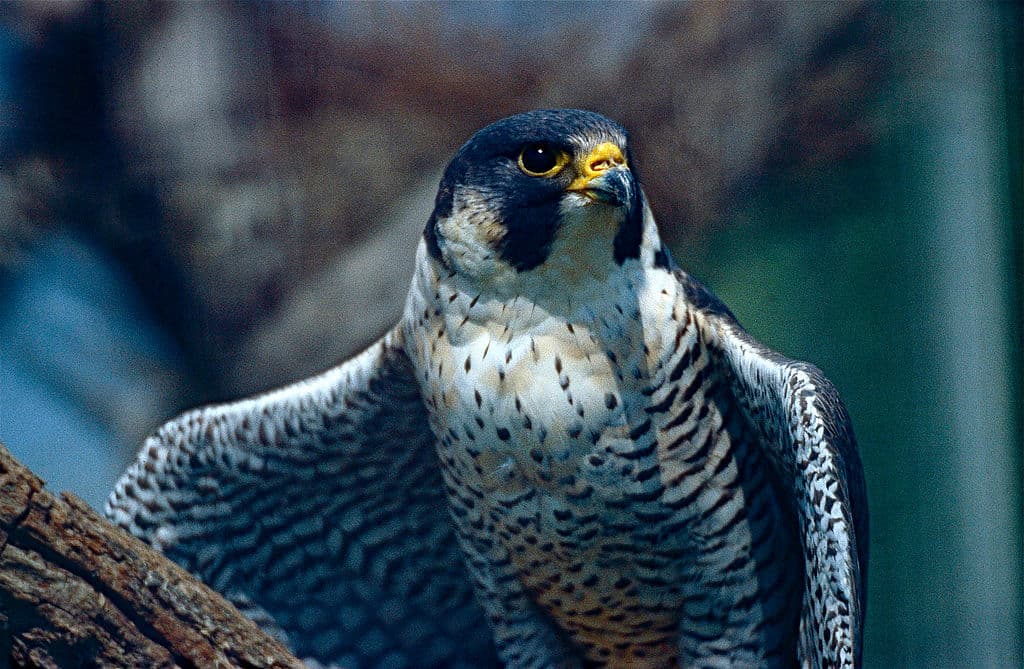Falcons are fierce birds of prey with the ability to fly at a high speed and change direction rapidly. We have 6 falcon species in Cambodia, and there are quite a few interesting things about them. So falcons are divisible into 3 or 4 groups including kestrels, hobbies, peregrine falcons, and the hierofalcons. How many groups do falcon species in Cambodia belong to? Feel free to find out below.
Collared Falconet (ស្ទាំងតូចស្លាបស្រួច)
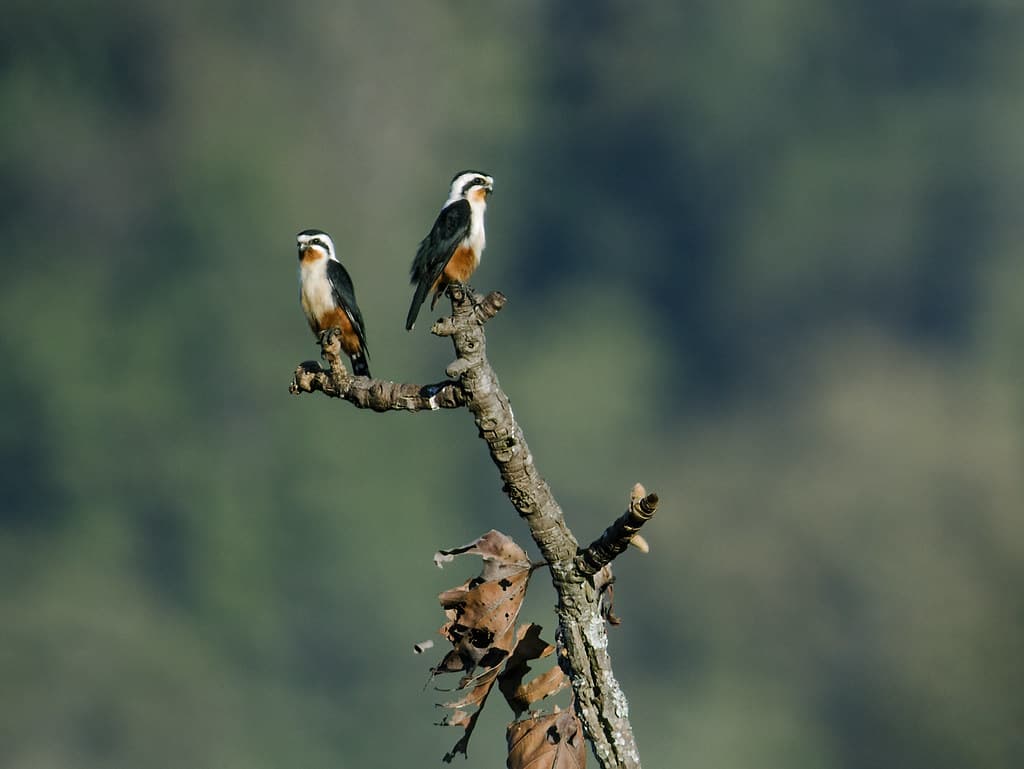
Looking absolutely adorable, the collared falconet is a small falcon member that is around 18 centimeters long. It has a very attractive and distinctive appearance that you can tell by the bold white collar and supercilia. The coolest part of the bird is clearly the black mark behind each eye that makes them super badass looking. This falconet has shortish wings that produce rapid wingbeats and long glides in flights. At the same time, they have very strong legs and feet that make hunting a breeze.
Small but fierce, collared falconets are a mini bird of prey in the Indian Subcontinent and Southeast Asia. They live in clearings and edges in evergreen forests, on the edges of broadleaf forests in temperate forests, and open deciduous forests. These birds are also found in abandoned hill cultivation with some trees that are often near water as well. In these natural habitats, these smallest birds of prey feed on large insects that they catch in the air. The insects are beetles, butterflies, cicadas, dragonflies, and grasshoppers. Some of their other common meals besides insects are lizards, small birds, and small mammals.
When hunting, they forage by short flights from dead branches where they perch. Collared falconets often hunt in small groups of up to 7 individuals, and they are more active at dusk to catch moths. The way they hunt is more like a flycatcher or a small shrike rather than a falcon. Plus with the similarity in appearance and size, they are often called mini shrikes. They eat insects on the spot but they will bring larger meals to their nests in tree cavities. Adult collared falconets are very aggressive towards intruders, both humans and animals, if they approach their nest site.
Eurasian Kestrel (ស្ទាំងទទាក់ម្សៅ)
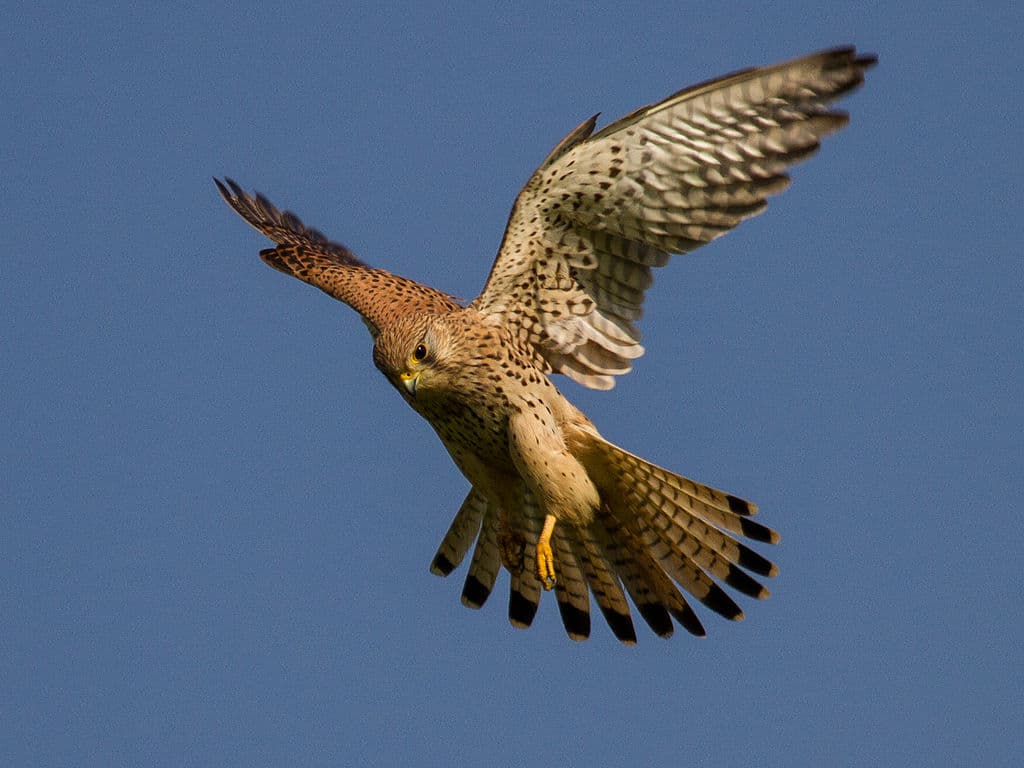
The common kestrel or Eurasian kestrel is a medium-sized bird that measures from 32 to 39 centimeters from head to tail. It has light chestnut brown plumage with blackish spots on the upperside and buff with narrow blackish streaks on the underside. Another interesting feature of this bird of prey is the beautiful blue-gray tail and long tail feathers. These tail feathers look absolutely stunning, and they make the birds look strikingly fierce.
This is one of the falcon species that have a very large range coverage, spreading across Africa, Asia, and Europe. Some even reach the east coast of North America as well as a few oceanic islands and parts of Micronesia. Because of the wide distribution, they also live in various habitat types in different areas as well. However, these kestrels prefer open habitats such as arid savannas, fields, heaths, marshlands, moorlands, shrublands, and wetlands. As long as there are alternative nesting and perching sites like buildings and rocks, they are good. And as long as there are abundant swathes of vegetation, they will be ready to settle down in those areas.
Being a bird of prey, they have very keen eyesight as they hover 10 to 20 meters above the ground searching for prey. Once it spots a meal, it will make a short steep dive towards the victim and snatch it right away. Another hunting method is perching a bit above the ground cover and pouncing on the prey once it sees the prey animal. Their regular prey animals are arthropods, frogs, insects, lizards, mice, reptiles, shrews, voles, and small birds like bats and swifts sometimes. Despite the wide distribution, they are facing threats due to the absence of nesting opportunities and habitat destruction.
Lesser Kestrel (ស្ទាំងវាលស្មៅតូច)

Not different from the rest of the falcon species in Cambodia, this one is also medium-sized. A lesser kestrel grows to around 27 to 33 centimeters long, and it has a big resemblance with the common kestrel. Males have almost no dark spots on their light gray and rufous bodies while females have a paler plumage. Females are usually larger than males but some males can be of the same size as females.
This small bird of prey is found in parts of Asia, Europe, and northern Africa. Their common habitats are in agricultural fields, grasslands, semi-desert, and steppe landscapes. Across their range, they nest colonially on buildings, cliffs, or in tree holes where females lay from 3 to 6 eggs. Lesser kestrels feed on crabs, earthworms, fish, insects, reptiles, rodents, and small birds that they take on the ground. Sometimes they hunt in large flocks, especially when there are insect swarms for everyone to eat. Despite the good population number, this falcon species is facing threats in some of their ranges. Those are agricultural practices that destroy their habitats and the habitats of their food sources.
Oriental Hobby (ស្ទាំងស្លាបស្រួចពោះពណ៌ច្រេះ)
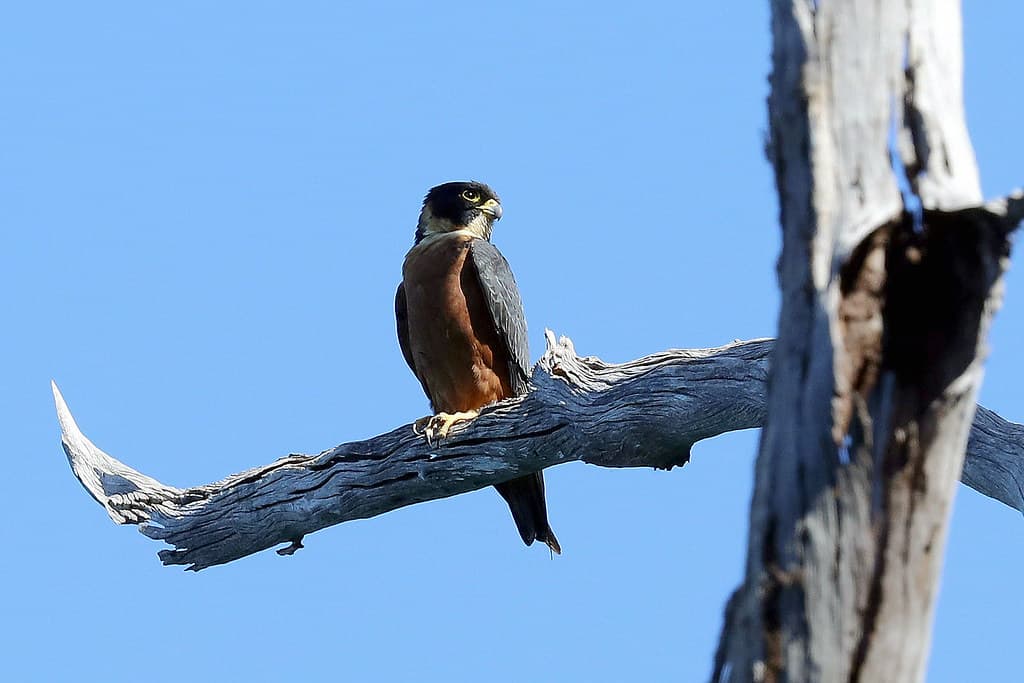
Adult oriental hobbies have rich chestnut underparts and bluish-gray upperparts with a black hood and pale throat. There are some brownish-red markings on their chests, and they have distinctive black and white patterns on their wings and tail feathers. The wings of these birds are pointy while their tails are short, and both sexes look alike.
Oriental hobby has a wide distribution, ranging from the Indian Subcontinent through Indochina and Australasia. In those regions, they inhabit clearings, farmlands, forest edges, grasslands, mangroves, native gardens, open countries, plantations, and secondary growth. Being quite large, this falcon species feeds mainly on insects and small birds like bats in their habitats. Speaking of habitats, they are common in lowland forested areas and woodland where food is abundant. They are more active at dawn and dusk, and they hunt alone.
Peregrine Falcon (ស្ទាំងធំស្លាបស្រួច)
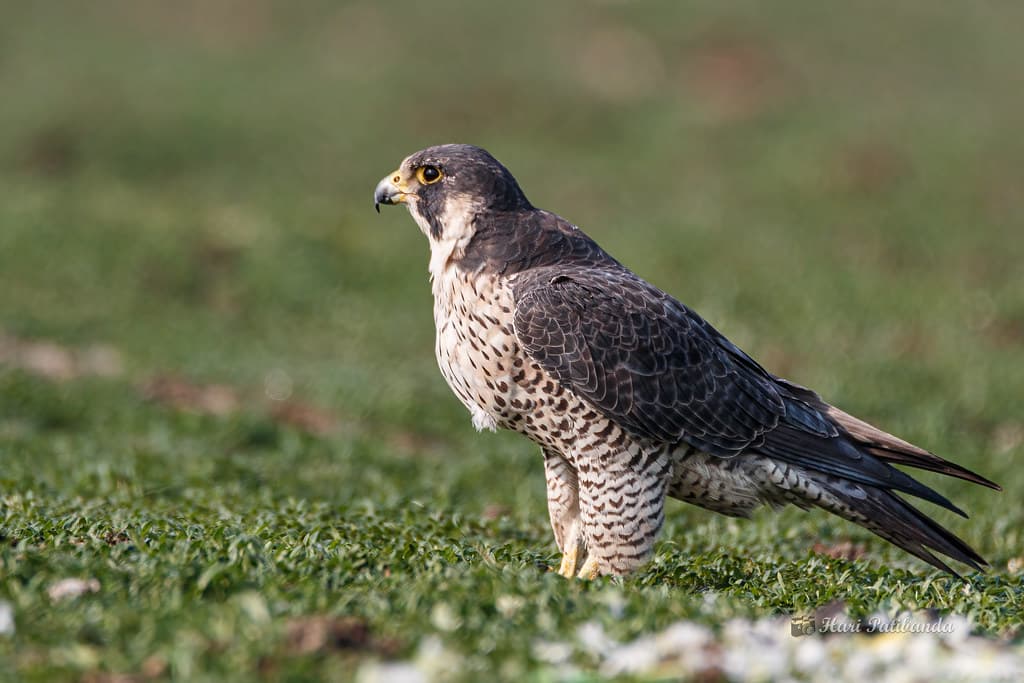
A peregrine falcon is a medium-to-large raptor that has a body length of 34 to 58 centimeters. Both males and females have a black head, blue-gray back, and white underparts with bars with similar markings and plumage. This swift bird of prey is famous for its speed which can reach over 320km/h to capture prey in flight. The technique is called “hunting stoop” which involves the raptor striking its victim midair with its outstretched talons. On top of that, they also have high trainability, strong hunting ability, and versatility that make them extremely unique.
Here is the raptor that many people are familiar with, the falcon species that has a very large range around the world. They breed almost everywhere on Earth, except for the extreme polar regions, high mountains, and most tropical rainforests. Mostly, they live along coastlines, mountain ranges, and river valleys as well as in cities. With a wide range, these birds of prey feed on a number of things but medium-sized birds are their exclusive meals. Some of the examples are doves, gamebirds, hummingbirds, parrots, pigeons, seabirds, songbirds, waders, and waterfowls. Besides those, they also eat insects, small mammals, and small reptiles that they usually hunt at dawn and dusk.
White-Rumped Falcon (ស្ទាំងស្លាបស្រួចចុងស)

Just like the name suggests, this falcon has a white plumage on its rump and its underparts. As for the upperparts and the wings, they are dark gray in color in males. In females, they have a rufous mantle on their upper backs and behind their heads. Both males and females have pure white breasts and upper back with slate gray wings. And both of them have round tails, with the outermost feathers an inch shorter than the middle ones.
As for this falcon species, it is native to Indochina including Cambodia, Laos, Myanmar, Thailand, and Vietnam. In these countries, they inhabit dry savannas, mixed deciduous forests, primary dipterocarp forests, subtropical dry forests, and tropical dry forests. Where they live, they feed mainly on insects and lizards that they take from the ground or in trees. Their common meals are cicadas, frogs, grasshoppers, small birds, and snakes. Unfortunately, this falcon species is classified as Near Threatened on the IUCN Red List due to habitat loss and hunting.
Related Post: Fish Eagle Species In Cambodia
